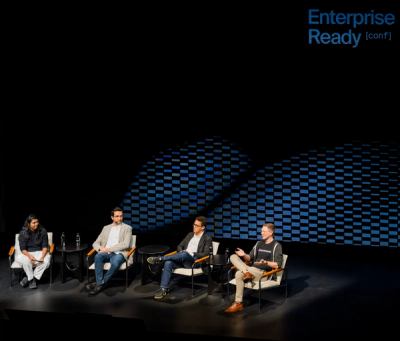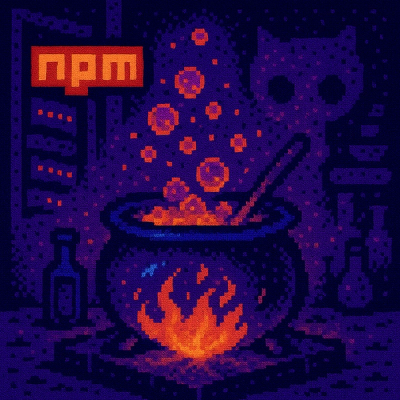
Research
/Security News
9 Malicious NuGet Packages Deliver Time-Delayed Destructive Payloads
Socket researchers discovered nine malicious NuGet packages that use time-delayed payloads to crash applications and corrupt industrial control systems.
bellhop-iframe
Advanced tools
Bellhop is a simple event-based communication layer between the page DOM and an iframe. It doesn't require any additional dependencies. Super easy to use and setup.
Bellhop is a simple event-based communication layer between the page DOM and an iframe. It doesn't require any additional dependencies. Super easy to use and setup.
npm install bellhop-iframe
The Bellhop module contains support for ES6 modules, CommonJS and browser global definitions. To import with ES6,
import { Bellhop } from 'bellhop-iframe';
To import with CommonJS, refer instead to the UMD build
const Bellhop = require('bellhop-iframe/dist/bellhop-umd.js');
You can also import the UMD version by using import
import { Bellhop } from 'bellhop-iframe/dist/bellhop-umd.js'
Lastly, the UMD module can also be directly included on an HTML page. This will declare Bellhop and attach it directly
to window
<script src="node_modules/bellhop-iframe/dist/bellhop-umd.js"></script>
Here's a very simple example to get started. We have two pages index.html and child.html. This is the minimum you need to get them talking to each other.
index.html<iframe src="child.html" id="page" width="200" height="200"></iframe>
<script>
// Create the bellhop object
const bellhop = new Bellhop();
// Pass in the iframe DOM object
bellhop.connect(document.getElementById("page"));
// Listen for the 'init' event from the iframe
bellhop.on('init', function(event){
// Handle the event here!
});
// Send data to the iframe
bellhop.send('user', {
"name" : "Dave Smith",
"age" : 16,
"city" : "Boston"
});
</script>
child.html<script>
// Create the bellhop object
const bellhop = new Bellhop();
bellhop.connect();
// An example event to sent to the parent
bellhop.send('init');
// Handle events from the parent
bellhop.on('user', function(event){
// Capture the data from the event
const user = event.data;
});
</script>
new BellhopThe constructor creates a new Bellhop instance, taking an optional unique identifier for this instance. If no id is provided, a random one is selected
connectConnects a Bellhop instance to an iframe, or it's containing window. For instance, given a Bellhop instance bellhop:
bellhop.connect();
will connect a child iframe to it's parent, allowing it to emit messages out of the iframe. However,
var iframe = document.querySelector('iframe');
bellhop.connect(iframe);
allows a containing page to connect with an interior iframe and emit message into the iframe.
destroydisconnect removes any listener for events from another frame, and stops listening for messages altogether
offRemoves an event listener previously added by the .on() method, or removes a given callback method from a listener. When deleting a callback, the function passed in is required to be the original function passed into the .on() method.
bellhop.off(‘init’); // removes the listener ‘init’ and all callbacks assigned to it
bellhop.off(‘init’, callback) // removes the specific callback provided without removing the listener
sendSends a named message to another iframe:
bellhop.send('newHighscore', { value: 100 });
fetch and respondConvenience methods for automating response of values between the interior and exterior of frames. For instance:
// index.html
var iframe = document.querySelector('iframe');
var bellhop = new Bellhop(iframe);
bellhop.connect();
bellhop.respond('config', { difficulty: 'hard', theme: 'dark' });
// child.html
var bellhop = new Bellhop();
bellhop.connect();
bellhop.fetch('config', function(result) {
console.log(result); // { difficulty: 'hard', theme: 'dark' }
});
Additionally, object passed to respond() can be a function, whose result will be returned in the callback of the fetch function.
// index.html
var functionExample = function(){
return "result of functionExample";
};
bellhop.respond('function', functionExample);
// child.html
bellhop.fetch('function', function(result) {
console.log(result.data); //result of functionExample
});
Furthermore, respond() accepts a plain object, string, or number. If a function is passed, it will be called and the function's return-value sent. If a promise is passed in or returned from a function that was passed in, that promise will be await-ed before it's value returned.
For example, the following all return "data" to bellhop.fetch()
//(example)
bellhop.respond('example', "data");
//OR (promise example)
let promiseData = new Promise(function(resolve, reject) {
resolve("data")
});
bellhop.respond('example', promiseData)
//OR (function example)
var functionExample = function(){
return "data";
};
bellhop.respond('example', functionExample);
//OR (function that returns a promise)
var functionPromiseExample = function(){
return new Promise(function(resolve, reject) {
resolve("data")
});
};
bellhop.respond('example', functionPromiseExample);
triggerTriggers any event handlers for a given event type optionally passing data to other areas in the app that are listening for this event
bellhop.trigger('eventType', {data: 'example'}); // triggers the event 'eventType' passing data to it's handlers
Debug ModeBellhop has a debug mode which enables additional logging when an instance sends or receives
a message. It can be enabled by simply setting the debug flag to true:
bellhop.debug = true;
By default (above method) it will print a message outlining whether the bellhop instance was a child or parent, whether the message was sent or received, and the contents of the message. If you require additional or custom logging you can also pass a function as the flag.
const log = () => {console.log('Hello World!');}
bellhop.debug = log; // Hello World!
If you pass a function to debug three parameters* are passed to help fill out the log statements if required:
const log = ({isChild, received, message}) => {
console.log(isChild); // (boolean) whether the instance is a child or parent.
console.log(received); // (boolean) whether the instance has received a message or sent one.
console.log(message); // (object) the content of the message.
}
*Note: the names must be identical, but you are able to omit any or all if they're not required.
targetProperty for retrieving the iframe element through which this Bellhop instance is communicating:
var iframe = document.querySelector('iframe');
var bellhop = new Bellhop(iframe);
console.log(bellhop.target === iframe.contentWindow); // true
Copyright (c) 2021 Springroll
Released under the MIT License.
[3.6.0] - 2024-10-25
FAQs
Bellhop is a simple event-based communication layer between the page DOM and an iframe. It doesn't require any additional dependencies. Super easy to use and setup.
The npm package bellhop-iframe receives a total of 683 weekly downloads. As such, bellhop-iframe popularity was classified as not popular.
We found that bellhop-iframe demonstrated a not healthy version release cadence and project activity because the last version was released a year ago. It has 2 open source maintainers collaborating on the project.
Did you know?

Socket for GitHub automatically highlights issues in each pull request and monitors the health of all your open source dependencies. Discover the contents of your packages and block harmful activity before you install or update your dependencies.

Research
/Security News
Socket researchers discovered nine malicious NuGet packages that use time-delayed payloads to crash applications and corrupt industrial control systems.

Security News
Socket CTO Ahmad Nassri discusses why supply chain attacks now target developer machines and what AI means for the future of enterprise security.

Security News
Learn the essential steps every developer should take to stay secure on npm and reduce exposure to supply chain attacks.